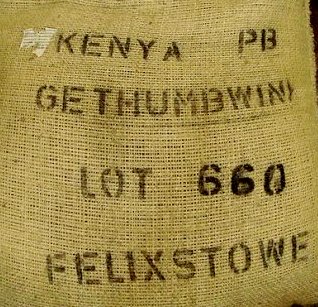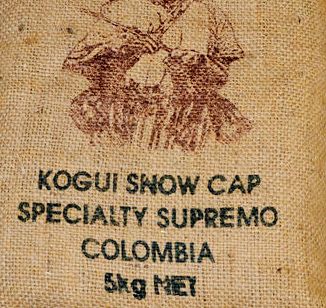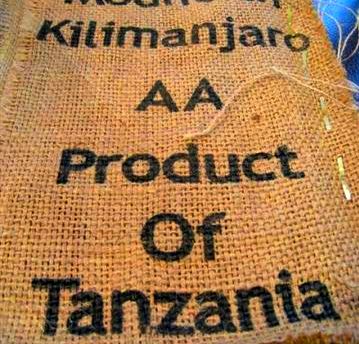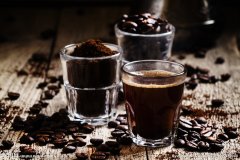What do the English and numbers on the coffee bag mean?



For professional baristas, please follow the coffee workshop (Wechat official account cafe_style)
We often see some English words and numbers on the names of coffee products.
Apart from representing names of origin, they also have English words like codes or combinations of English plus numbers:
For example:
Kenya AA Special 、 Colombia Supremo 、
Ethiopia Yirga Kochere G1, Sumatra Blue Batak Mandheling PB.
Friends who have just come into contact with boutique coffee must have this confusion:
Except for the names of producing countries and producing areas
How on earth am I going to understand these combinations of English or English numbers? What exactly do they mean?
The common way of grading coffee
Like many other species in the world, coffee has a wide variety, and its appearance is roughly the same, but there will be slight differences and characteristics depending on the congenital conditions, growth environment, climate, and treatment methods.
In different countries, there will be different ways of grading. These grading standards mainly come from the following key points:
1. Differences in the appearance of raw beans, such as size, shape, defect ratio.
two。 The environment in which raw beans grow and their effects, such as altitude and hardness.
3. After baking, it is judged by the quality of the cup.
Before coffee beans are processed and exported, each producer will grade them according to some key points:
1. Proportion of defective beans
The less the proportion of defective beans, the higher the grade of beans. Picking out defective beans is a very labor-consuming and time-consuming thing.
For example: Ethiopia's raw beans have G1--G5, must be G1, G2 is the washing quality grade, G3, G4 is the sun quality grade, general commercial beans is G4 grade. (in recent years, the preferred grades of many Ethiopian sun-dried beans are also marked with G1 and G2. )
Defective bean
two。 The length and width (size) of the bean body
Such as: Colombia, Kenya.
Colombia takes "bean big is beautiful" as its purpose, grading is based on items, more than 18 mesh (about 0.7cm) is Supremo, and the following is Excelso.
(item represents the diameter of the coffee bean, one item is 1x64 inch, 1 inch = 25.4mm)
A sieve used to determine the size of beans.
Kenya's grading is based mainly on the size of beans, supplemented by cup quality and bean weight.
For example, the highest quality grade is AA PLUS (AA+), followed by AA and AB (15murmur16 items, accounting for most of the output). Wait. In addition, there is PB, which means Peaberry, which is classified by appearance.
3. Altitude and hardness
For example, the producing countries of Central and South America except Brazil and Colombia.
For example:
Grade altitude mark
1 1350 Mel 1500 m SHB (Strictly Hard Bean) very hard beans
21200MuthMel 1350m HB (Hard Bean) hard beans
In addition, there are SH, EPW, PW. Wait.
The higher the altitude of the coffee tree, the harder the coffee beans will be. this is because factors such as low temperature, short sunshine and high humidity will make the coffee grow more slowly and produce fruits with higher density, and the flavor of coffee beans, such as acidity and sweetness, will be more saturated.
In short, the altitude has a great influence on the quality of coffee beans.
4. Cup test quality
Such as Brazil.
Although it is the largest coffee producing country in the world, among the coffee producing countries in Central and South America, Brazil's production altitude is on the low side, and the topography is flat, less shaded trees, and lack of microclimate, so the coffee beans produced are softer and smoother than other producing areas, so Brazil has switched to five grades:
Strictly Soft is extremely meek.
Soft compliant
Softish is a little softer.
Hardish is not easy to read.
Rioy smells like iodine choking.
Smart Brazilians use taste for grading. The Brazilian Coffee Excellence Competition, Cup of Excellence, which has been held since 1999, uses the mild and smooth low acidity, mellow thickness and sweetness of Brazilian coffee, as well as the overall presentation of nutty and cocoa flavors, as the basis for coffee evaluation. "the sweetness, purity and smooth finish of the entrance" has become a representative feature of Brazilian high-quality coffee.
Grading is an important consideration when we choose coffee beans; of course, raw coffee beans must be well preserved so that coffee farmers in the producing areas do not waste their hard work in planting and screening, and finally go through changes in roasting and brewing that vary from person to person. there will be millions of changes in the taste of coffee.
Important Notice :
前街咖啡 FrontStreet Coffee has moved to new addredd:
FrontStreet Coffee Address: 315,Donghua East Road,GuangZhou
Tel:020 38364473
- Prev

Baking technology paste: raw vs cooked spelling
Communication of professional baristas Please follow the Coffee Workshop (official Wechat account cafe_style) Preface: recently, when some new customers talked to me about the beans they used in their stores, they always mentioned that the beans were unstable, sometimes sour, sometimes bitter, and I don't know why. Later, I asked him to ask the baker about the formula of the beans used in his store, how to bake them, and how much they were baked.
- Next

Beginners must see: what are the ways to make coffee?
Exchange of professional baristas Please pay attention to the coffee workshop (Wechat official account cafe_style) filter paper brewing filter paper brewing the easiest and easiest way to brew coffee. The filter paper can be discarded immediately after being used once, which is more sanitary and easy to clean up. The amount of boiled water and the method of injection can also be adjusted. One person can also brew, which is the best way to brew a small number of people. Brewing
Related
- Beginners will see the "Coffee pull flower" guide!
- What is the difference between ice blog purified milk and ordinary milk coffee?
- Why is the Philippines the largest producer of crops in Liberia?
- For coffee extraction, should the fine powder be retained?
- How does extracted espresso fill pressed powder? How much strength does it take to press the powder?
- How to make jasmine cold extract coffee? Is the jasmine + latte good?
- Will this little toy really make the coffee taste better? How does Lily Drip affect coffee extraction?
- Will the action of slapping the filter cup also affect coffee extraction?
- What's the difference between powder-to-water ratio and powder-to-liquid ratio?
- What is the Ethiopian local species? What does it have to do with Heirloom native species?

